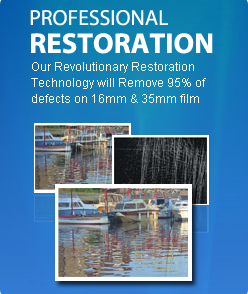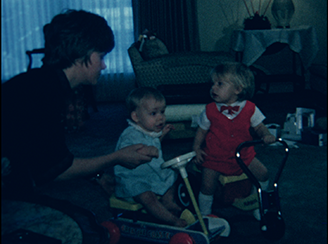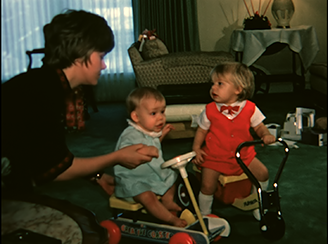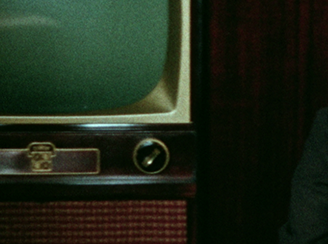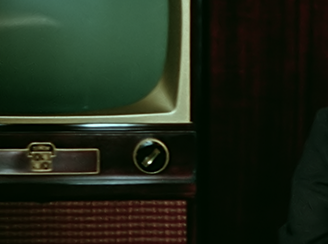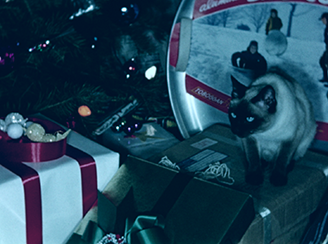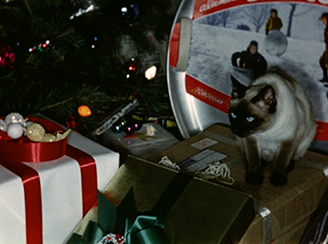
Pro Hollywood Restoration San Francisco
We offer 3 restoration options. Color Correction, Grain Elimination and Stabilization Technology.
About 90% of our San Francisco customers want the color correction and about 75% do the grain elimination. We do also offer image stabilization. It adds a nice touch to those old home movies.
Color correction is very important for amateur film because we will be able to recover more footage that was shot too dark or has darkened as part of the aging process. The scanner monitors the light and color balance and will change it based on pre-determined algorithms. This means it will pump more light through film that is dark and it will back off on film that is too bright. This will allow us to recover footage that would normally be too dark or too light. In addition, after the scan, an editor will go through the footage looking at skin tone and things like the color of the sky to order to make sure it looks correct. You can see in the examples below how much better the images look with our 2 pass color correction.
Grain is on all film. Look at the "Before" picture below compared to the "After" picture. These little dots muddy up the image and take away from the content you care most about. Now, look at the After picture on the right. This is what you really want to see. We do recommend Grain Elimination on all film for our San Francisco customers.
Most amateur films have some stabilization issues just because of the way the film was shot. But, most people are used to seeing this on old movie film (See example video clip below). So, we see stabilization as a nice to have but not required. If you can afford to do it then we would recommend it. If it pushes you outside your budget then we would just recommend the Grain Elimination technology.
Super 8 Film Examples San Francisco
|
|
Before |
After |
|
|
|
|
Before |
After |
16mm Film Examples
|
|
Before |
After |
|
|
|
|
16mm Before |
16mm After |
San Francisco Fun Facts: The earthquake of 1906 and the resulting fires devastated the city; the Panama Canal in 1915 improved the distribution of goods to the city, enabling rapid rebuilding. During World War II, San Francisco was an important supply center to the Pacific. Today, San Francisco remains a top commercial hub, with a diverse population of around 800,000, with one of the nation's largest Asian communities and a significant gay/lesbian community. Along with Oakland, San Jose and other communities in the Bay Area, San Francisco is part of the country's fourth-largest metro area.
California Fun Facts: Shortly thereafter, the discovery of gold at Sutter’s Mill in 1848 inspired a wave of settlers to head to the west coast in search of fortune. In 1850 California became the 31st state, and is now the third largest state behind Alaska and Texas. With millions of acres of farmland, California leads the U.S. in agricultural production.

